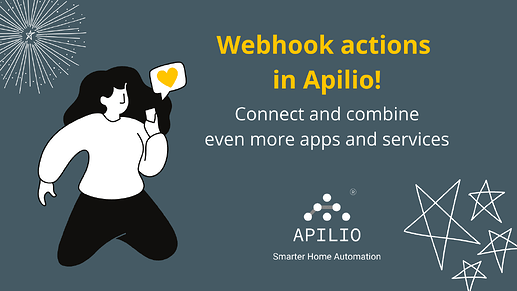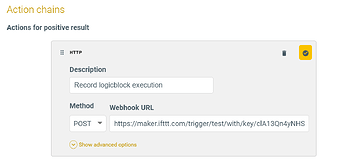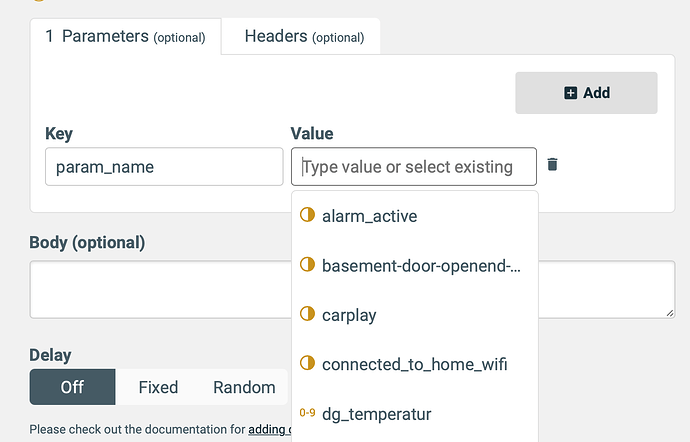Last month we released incoming webhooks, and now we welcome outgoing webhooks: webhook actions in Apilio!
How do I use webhooks to send information from Apilio to other apps and services?
Webhooks are an easy way of sending information instantly from Apilio to other services. When the actions are executed in a Logicblock, a webhook sends a message to the unique URL you specify.
A webhook is like having the telephone number for another app: you call them and leave a message!
If you hadn’t noticed webhooks before in your apps, you’ll start seeing them everywhere now!
How to quickly configure a webhook action
First you add a description. This is so you can remember what that webhook is doing, because those super long links are not very human-friendly.
Then, you’ll need to paste the unique URL from the service you’d like to call in the “Webhook URL” field.
When a service accepts incoming information via webhooks, the service will tell you exactly which URL to use. This is what Apilio does for example with our incoming webhooks for Variables and Logicblocks: the URL is available for you to copy and paste it somewhere else.
Extra parameters
These are optional, but we’ve included them as some services might let you send a lot more info.
You can add header keys and values, and a request body, in case this is needed for your service.
Adding delays (fixed or random) to this type of action is also possible, in true Apilio style ![]()
Combine it with other actions in Apilio
You can combine webhook, Tuya and IFTTT actions into one Logicblock if you wish! We want you to be able to combine as many apps, devices and services into your logic:
Any questions?
The team is here to help ![]() Let us know in the comments!
Let us know in the comments!






